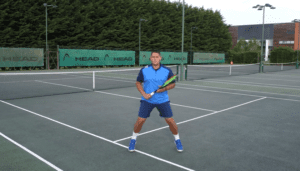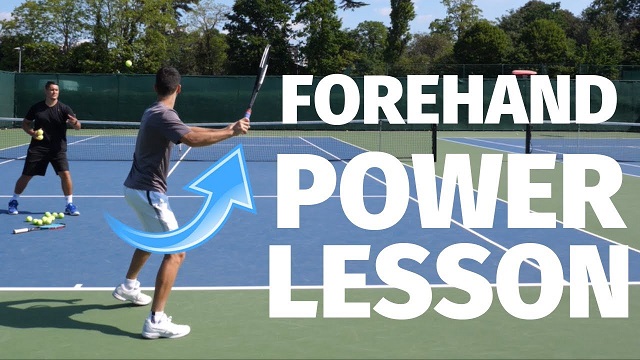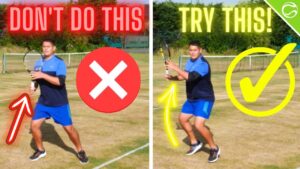
Tennis Forehand Technique – 5 Steps To Crazy Power On Your Forehand

Creating effortless power on your forehand comes down to a few key things, however, generating good racket head speed is at the forefront of them all.
In this tennis lesson, coach Simon Konov of Top Tennis Training will show you five steps to generating crazy power on your tennis forehand.
Step One: Racket head speed. If you do everything correctly with your technique, but your racket travels through the contact point slowly on your forehand, you’ll always struggle to create the kind of power that you really want on your tennis forehand. Forehand technique is very important, but too often players forget the fact that good forehand technique should help you achieve more racket head speed.
Step Two: Coiling the upper body at the start of the swing which will store elastic energy in your core muscles, the trunk muscles which are responsible for rotation in the upper body. By coiling your upper body you do two main things, it firstly initiates the swing, creating time and secondly it stores energy in the major trunk muscles, energy which can then be released on the way forward.
Step Three: A good swing that helps you generate extra racket head speed and gives you enough distance to truly accelerate the racket head. If your forehand is very compact and you don’t have much distance to swing the racket, achieving high levels of racket head speed becomes very difficult. However, if you use a circular loop, which is very common amongst the best tennis players in the world, it gives you the necessary distance you need to speed up the racket.
Step Four: Creating good racket lag prior to contact. When you study the best forehands in the world, you’ll notice that all of them reach a very similar position just prior to contact. The racket head lags behind the hand and grip of the racket. This racket lag creates a lever over the oncoming ball and gives the player more power but also control on the shot.
Step Five: Using ground force to explode up, into the ball. By loading the legs on your tennis forehand, you’re able to store explosive energy in the major muscles of your legs which includes the quads, hamstrings, glutes and calf muscles. When you then unload and come up into the ball, you’ll create a massive amount of ground force that helps kick start the entire kinetic chain and increases the racket head speed.



